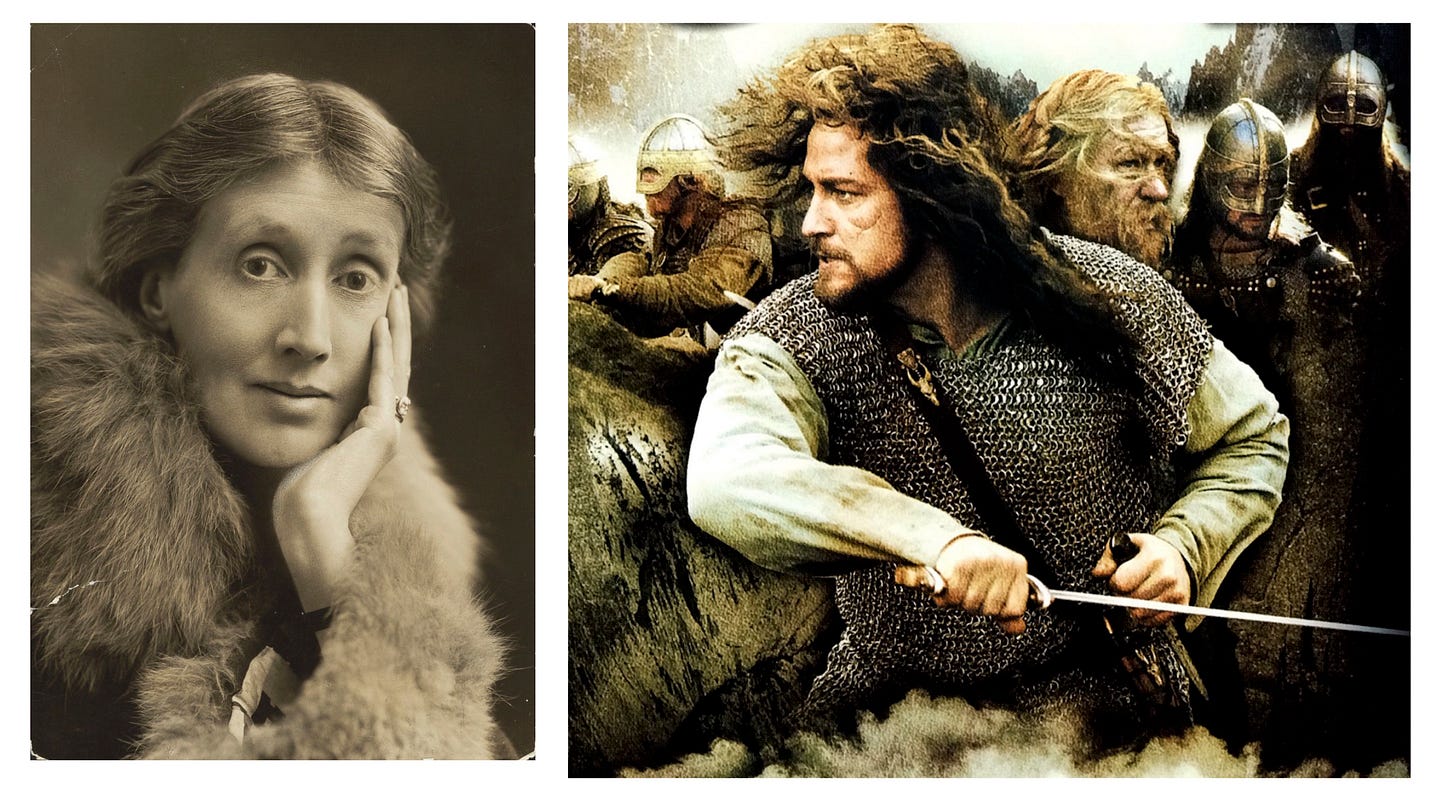The Massachusetts Medievalist on Virginia Woolf and Beowulf
After a lovely month of reading novels and visiting national parks, the Massachusetts Medievalist has returned to New England and to knotty problems of literary history and criticism. Today's item: did Virginia Woolf read Beowulf? And could the structure of her great novel To the Lighthouse suggest some answers to that question?
I actually started wondering about this question because of the shopworn phrase "from Beowulf to Virginia Woolf," which is not just the title of a 1952 satiric literary history book that didn't age well. The phrase also serves as shorthand for undergraduate English literature surveys in much the same way that "Caves to Cathedrals" functions for Art History. Lesley no longer offers this sort of literary survey, since we're trying to get away from the ways that the traditional canon imposes white patriarchal paradigms, but the phrase is still useful when I need a quick answer to a social question about what I teach.
But did Virginia Woolf actually read Beowulf? My initial thought was: VW has read everything, including Beowulf. Further reflection led me to a seeming structural similarity between Beowulf and To the Lighthouse -- that both texts include two major sections connected by a dramatically shorter transitional section. Woolf herself made a diagram of Lighthouse's structure, which she famously described as "two blocks joined by a corridor":
(image from woolfonline.com)
The first and third sections of the novel, "The Window" and "The Lighthouse," are the blocks joined by the corridor of "Time Passes," a much shorter section where crucial events notoriously happen in brackets and parentheses:
[…Mrs. Ramsey having died rather suddenly the night before, his arms, though stretched out, remained empty] (128).
Each of the blocks takes place on a single day, but various flashbacks and memories allow those two days to provide all sorts of expositions and explanations for those events.
Similarly, Beowulf consists of two "blocks," Beowulf's journey to Denmark and Beowulf's fight with the dragon, joined by a "corridor" of the thinnest of connectors:
"…afterward the broad realm passed to the hand of Beowulf; he kept it well for fifty winters - the king was then old, an aged guardian of the homeland - until a certain one grew accustomed to holding sway on dark nights, a dragon…." (2207-2211)
And both of Beowulf's "blocks" are full of flashbacks and memories as well, with Woolfian bendings of time and space; whole books and websites are devoted to clear, chronological retellings of the various convoluted episodes of Beowulf's intergenerational feuds.
So this structural similarity seems like Woolf may have known Beowulf? It seems hard to believe a woman as well-read as Virginia Woolf had not read Beowulf, but - alas - it seems she did not. The Woolfs did not own a copy of Beowulf in the original Old English or in translation (a handy catalog of the Woolf library is online); Beowulf is not an entry in VW's voluminous notes for her projected book of English literary history, which would probably have started with Chaucer (her reading notes on Chaucer's Canterbury Tales are at the University of Surrey).
The only explanation I can suggest for what seems like an egregious omission is that for Woolf, Chaucer was the "father of English literature," writing in somewhat recognizable (to her) Middle English. Woolf's English Middle Ages included the Pastons and her wonderful tale of "Joan Martyn." She must have known of the existence of Beowulf, but decided that it wasn’t part of her version of English literary history - which is a shame, since I would love to know how Grendel's Mother could fit into Woolf's vision of a female-focused English literary history - a Mere of One's Own, as it were.
Quotations from:
Woolf, To the Lighthouse (Houghton Mifflin, 1927, 1981).
Fulk, ed. and trans., Beowulf (Harvard University Press, 2010).






